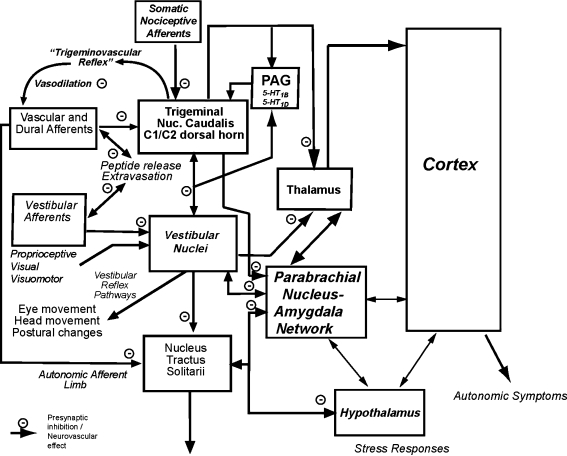Fig. 3.
Schematic diagram to explain effects of rizatriptan on motion sickness in migraineurs. The enhanced motion-sickness susceptibility in migraineurs is hypothesized to reflect the net vestibular nuclear and solitary nucleus effects of vestibular stimulation. The trigeminal nociceptive pathway and vestibular nuclei also contribute ascending thalamic connections, which contribute to autonomic symptoms via projections to the cerebral cortex. Spinal trigeminal nuclear and vestibular nuclear neurons also project to the parabrachial nucleus. Stress responses and vasopressin release are mediated by interconnections of the parabrachial pathways with the hypothalamus. We propose that motion-sickness sensitivity is decreased by the actions of rizatriptan on 5-HT1B and 5-HT1D receptors on (1) vasculature (e.g. blocking vasodilatation), (2) vestibular ganglion cells, (3) trigeminal ganglion cells (for somatic, vascular and dural afferents), (4) several brainstem pathways and projections, and (5) neurons in the periaqueductal gray (PAG). The primary effect of rizatriptan is via presynaptic inhibition of terminals that can use either excitatory amino acids or GABA. These presynaptic effects can occur at primary afferent and in CNS pathways

